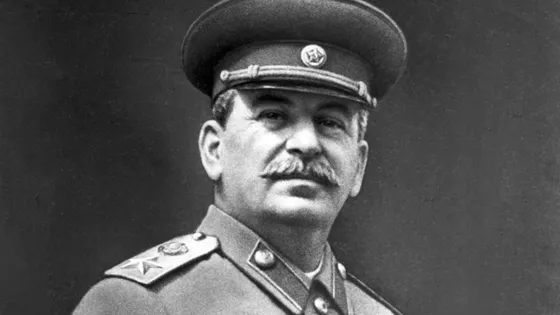Today teenagers, adults, even the elderly want to decorate their bodies with tattoos – but this was not always the case. Until the end of the 20th century, body drawings were common among prisoners or employees, but not among ordinary people. It was almost impossible to see a tattoo on a popular writer or politician. Rambler brought together seven historical figures who hid tattoos under their clothes.
Nicholas II
Where and what: dragon and name on hand, sword on chest
At the end of the 19th century, the future emperor visited several countries to strengthen international relations. Nicholas II liked Japan so much that he got a tattoo depicting a dragon in memory of the trip. Such a drawing is popular in the culture of the Land of the Rising Sun: a fictional creature symbolizes happiness and wealth. Later, the emperor made two more drawings for himself, but at home – a sword on his chest and the name of his wife Alexandra Feodorovna on his arm.
George Orwell
Where and what: knuckle circles
The author of the dystopia “1984” also had drawings on the body. From 1922 to 1927, the writer served with the Colonial Police in Burma in Southeast Asia. There he made blue circles on his knuckles – according to local legends, such a pattern protected from illness and injury.
Joseph Stalin
Where and what: skull on chest
In his youth, the Soviet politician was imprisoned several times, and once Stalin was even exiled to Siberian exile. In captivity, Joseph Vissarionovich acquired a drawing on his chest – a blue grinning skull. It is surprising that the portrait of Stalin on the chest would become a popular design in Soviet prisons. The prisoners believed that he would save them from being shot – no one would dare to aim at the Soviet leader.
Thomas Edison
Where and what: stripes on the body
An American inventor in 1876 invented an electric pen based on a needle and ink. The entrepreneur envisioned the pen to help small businesses make multiple stencils, but the idea didn’t catch on. The pen was later reworked into what became the first ever tattoo machine. And Edison himself, for the sake of experiment, applied ink to his skin – squares and stripes were obtained.
Winston Churchill
Where and what: anchor on the shoulder
The British leader made the drawing, probably for the sake of beauty: Churchill himself never served at sea. For him, the drawing symbolized the search for support and a home. By the way, the love for drawings on the body was “passed on” by inheritance: Churchill’s mother had a tattoo in the form of a snake.
Prince Charles
Where and what: unknown, tattoo removed
This is probably just a rumor – they say that the heir to the British throne and the son of Elizabeth II made himself some kind of tattoo while serving in the army. The drawing was removed from the body before the wedding with Princess Diana, f its place and meaning are carefully hidden.
Theodore Roosevelt
Where and what: coat of arms on the chest
The 26th President of the United States had a tattoo on his chest depicting the family coat of arms – three roses framed by red and white feathers.













 English
English French
French Spanish
Spanish German
German Dutch
Dutch Italian
Italian Danish
Danish Portuguese
Portuguese Greek
Greek Russian
Russian Swedish
Swedish Bulgarian
Bulgarian Hungarian
Hungarian Catalan
Catalan Ukrainian
Ukrainian Polish
Polish Basque
Basque Chinese (Simplified)
Chinese (Simplified) Japanese
Japanese Hebrew
Hebrew Arabic
Arabic Swahili
Swahili Amharic
Amharic Irish
Irish Afrikaans
Afrikaans Albanian
Albanian Armenian
Armenian Azerbaijani
Azerbaijani Belarusian
Belarusian Bengali
Bengali Bosnian
Bosnian Cebuano
Cebuano Chichewa
Chichewa Chinese (Traditional)
Chinese (Traditional) Corsican
Corsican Croatian
Croatian Czech
Czech Esperanto
Esperanto Estonian
Estonian Filipino
Filipino Finnish
Finnish Frisian
Frisian Galician
Galician Georgian
Georgian Gujarati
Gujarati Haitian Creole
Haitian Creole Hausa
Hausa Hawaiian
Hawaiian Hindi
Hindi Hmong
Hmong Icelandic
Icelandic Igbo
Igbo Indonesian
Indonesian Javanese
Javanese Kannada
Kannada Kazakh
Kazakh Khmer
Khmer Korean
Korean Kurdish (Kurmanji)
Kurdish (Kurmanji) Kyrgyz
Kyrgyz Lao
Lao Latin
Latin Latvian
Latvian Lithuanian
Lithuanian Luxembourgish
Luxembourgish Macedonian
Macedonian Malagasy
Malagasy Malay
Malay Malayalam
Malayalam Maltese
Maltese Maori
Maori Marathi
Marathi Mongolian
Mongolian Myanmar (Burmese)
Myanmar (Burmese) Nepali
Nepali Norwegian
Norwegian Pashto
Pashto Persian
Persian Punjabi
Punjabi Romanian
Romanian Samoan
Samoan Scottish Gaelic
Scottish Gaelic Serbian
Serbian Sesotho
Sesotho Shona
Shona Sindhi
Sindhi Sinhala
Sinhala Slovak
Slovak Slovenian
Slovenian Somali
Somali Sundanese
Sundanese Tajik
Tajik Tamil
Tamil Telugu
Telugu Thai
Thai Turkish
Turkish Urdu
Urdu Uzbek
Uzbek Vietnamese
Vietnamese Welsh
Welsh Xhosa
Xhosa Yiddish
Yiddish Yoruba
Yoruba Zulu
Zulu